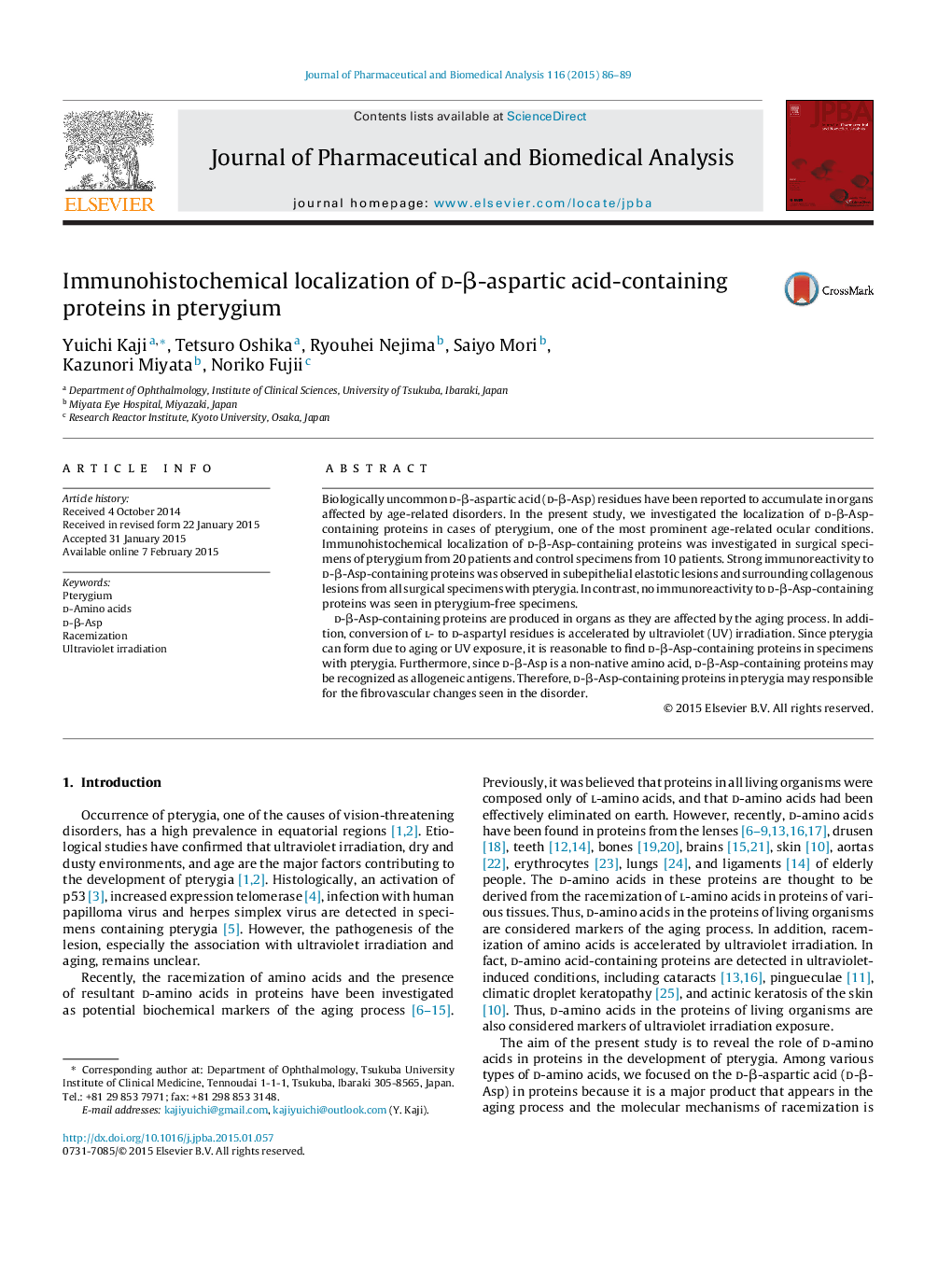| Article ID | Journal | Published Year | Pages | File Type |
|---|---|---|---|---|
| 1220479 | Journal of Pharmaceutical and Biomedical Analysis | 2015 | 4 Pages |
•Surgical specimens with pterygium were excised from 20 patients.•Control specimens without pterygium were excised from 10 patients.•Localization of d-β-aspartic acid-containing proteins was determined.•d-β-Aspartic acid-containing proteins were detected only in specimens with pterygium.
Biologically uncommon d-β-aspartic acid (d-β-Asp) residues have been reported to accumulate in organs affected by age-related disorders. In the present study, we investigated the localization of d-β-Asp-containing proteins in cases of pterygium, one of the most prominent age-related ocular conditions. Immunohistochemical localization of d-β-Asp-containing proteins was investigated in surgical specimens of pterygium from 20 patients and control specimens from 10 patients. Strong immunoreactivity to d-β-Asp-containing proteins was observed in subepithelial elastotic lesions and surrounding collagenous lesions from all surgical specimens with pterygia. In contrast, no immunoreactivity to d-β-Asp-containing proteins was seen in pterygium-free specimens.d-β-Asp-containing proteins are produced in organs as they are affected by the aging process. In addition, conversion of l- to d-aspartyl residues is accelerated by ultraviolet (UV) irradiation. Since pterygia can form due to aging or UV exposure, it is reasonable to find d-β-Asp-containing proteins in specimens with pterygia. Furthermore, since d-β-Asp is a non-native amino acid, d-β-Asp-containing proteins may be recognized as allogeneic antigens. Therefore, d-β-Asp-containing proteins in pterygia may responsible for the fibrovascular changes seen in the disorder.
Graphical abstractFigure optionsDownload full-size imageDownload as PowerPoint slide
